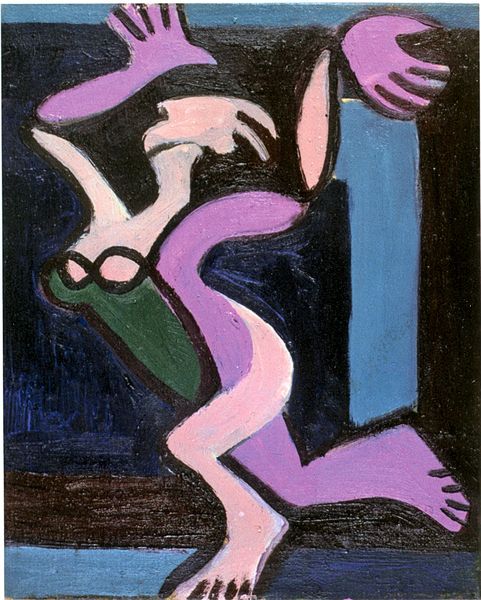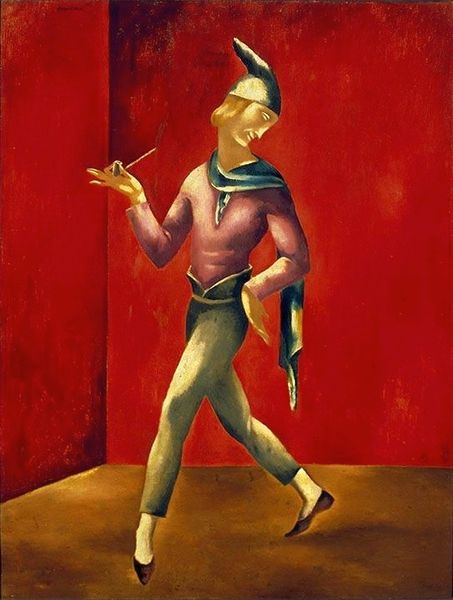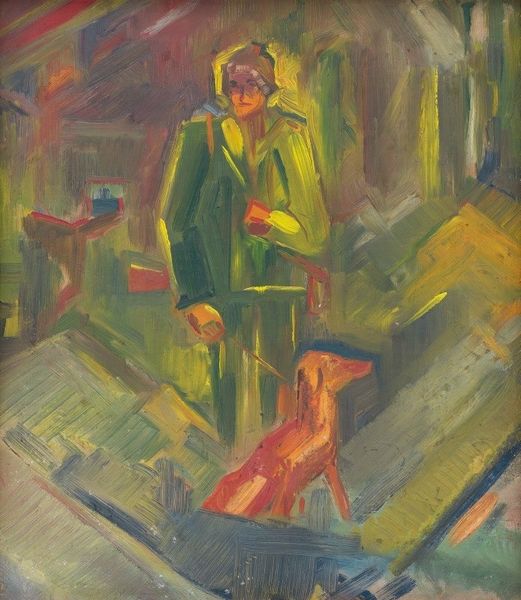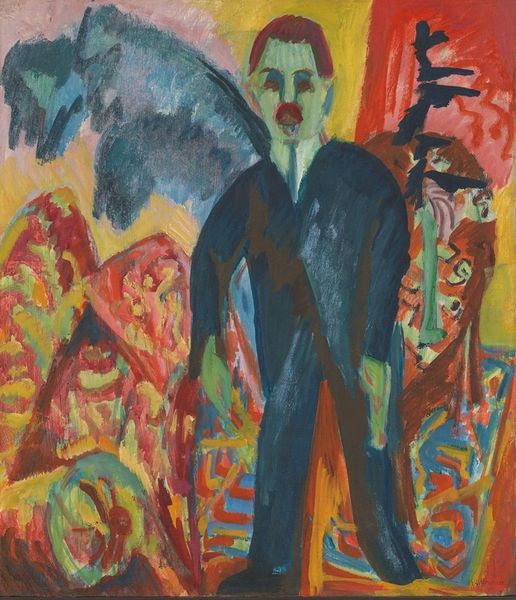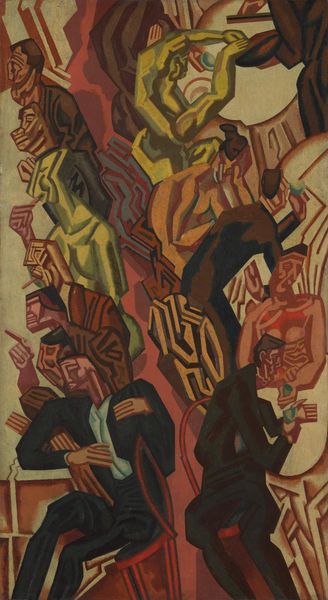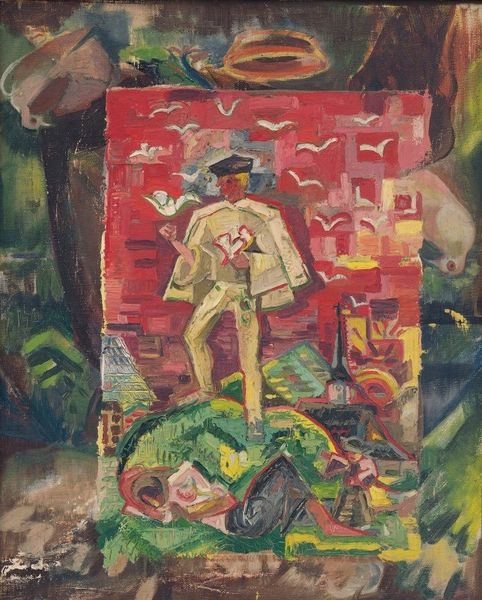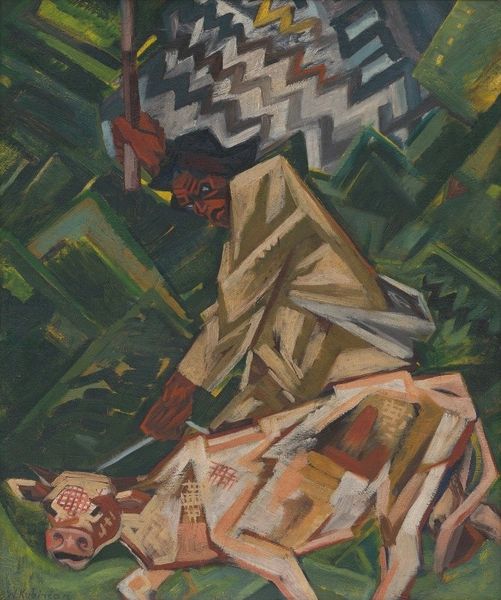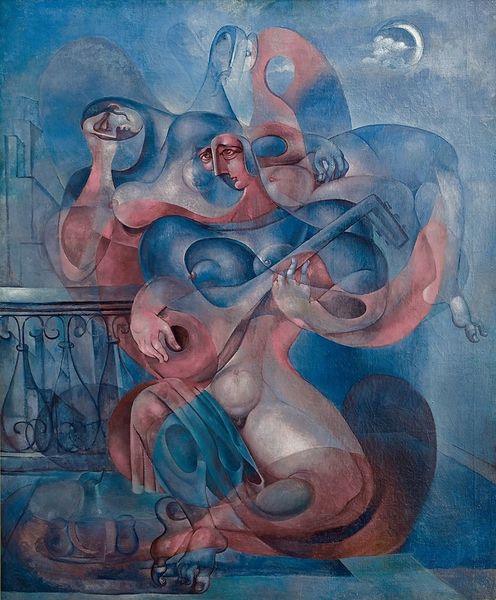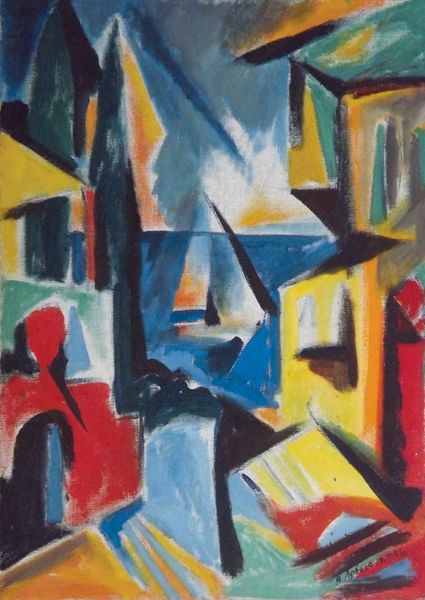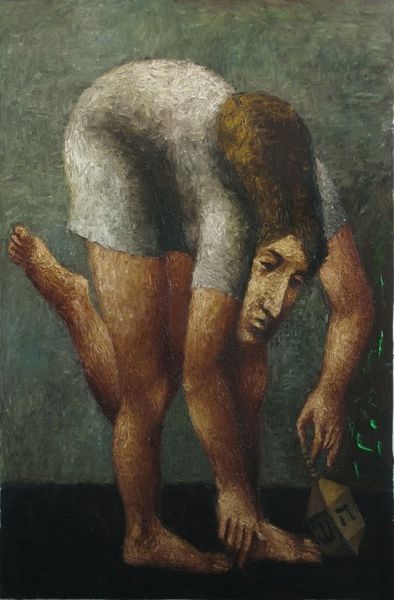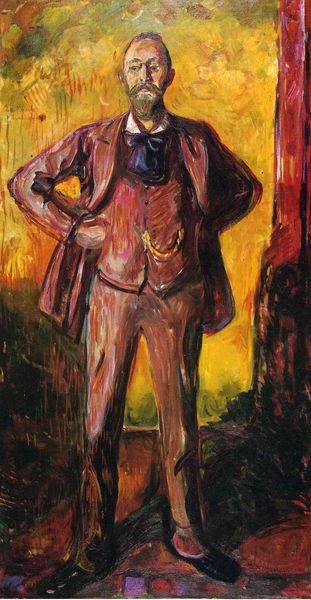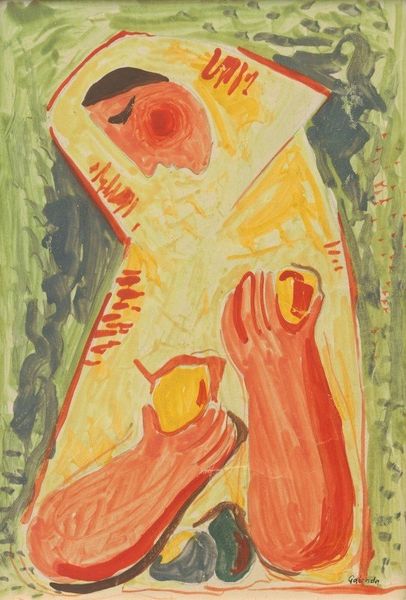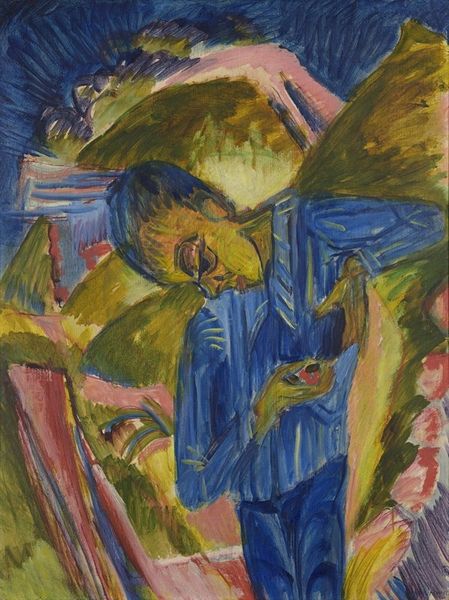
painting, watercolor
#
portrait
#
painting
#
landscape
#
figuration
#
oil painting
#
watercolor
#
neo expressionist
#
expressionism
#
cityscape
#
painting art
#
expressionist
Copyright: Public Domain: Artvee
Curator: Let's turn our attention to Karl Wiener's "Der Sucher," or "The Seeker," created around 1928. It's an oil and watercolor work that presents us with a striking, almost dreamlike scenario. Editor: My immediate impression is one of unease. The figure looks stranded amidst the chaotic cityscape. There's a tangible sense of disorientation in the application of color. Curator: That disorientation is key. Wiener was deeply engaged with the social anxieties of the interwar period. The figure, this "seeker," embodies the uncertainty and yearning for meaning that permeated Weimar-era society. Note how the cityscape seems to press in on the figure, suggesting the overwhelming pressures of modern urban life. Editor: Absolutely. The buildings almost seem to be melting, devoid of structural integrity. But look closely at the way the paint is applied; see those short, broken brushstrokes? Wiener uses that brokenness in his forms to express vulnerability in the protagonist, as well as his alienated positioning. Curator: I agree, and it is no coincidence that Wiener positions the main character on top of industrial machinery to enhance the statement about the artist's expression of alienation with technological advancement and industry. Editor: To build on that, the expressionistic style here departs significantly from traditional representational norms. There is such great color modulation and expressive distortion as Wiener moves from dark to vibrant tones. Curator: Yes, and within the scope of Expressionism, it highlights the artist's engagement with contemporary socio-political questions as that movement sought to amplify emotion as a conduit for social change. In particular, Weiner joined other German Expressionists with work focused on criticizing urban planning of the time. Editor: This work is particularly striking. The balance of pictorial composition makes the main character the centerpiece, which I feel emphasizes the work’s conceptual basis rather than its execution. Curator: This piece indeed offers a visual representation of an era grappling with rapid change. The individual in search of stability becomes a symbol for broader social tensions. Editor: I'll carry the echoes of that vibrant, chaotic energy with me. Curator: And I will remember the visual depiction of societal restlessness of that period.
Comments
No comments
Be the first to comment and join the conversation on the ultimate creative platform.
